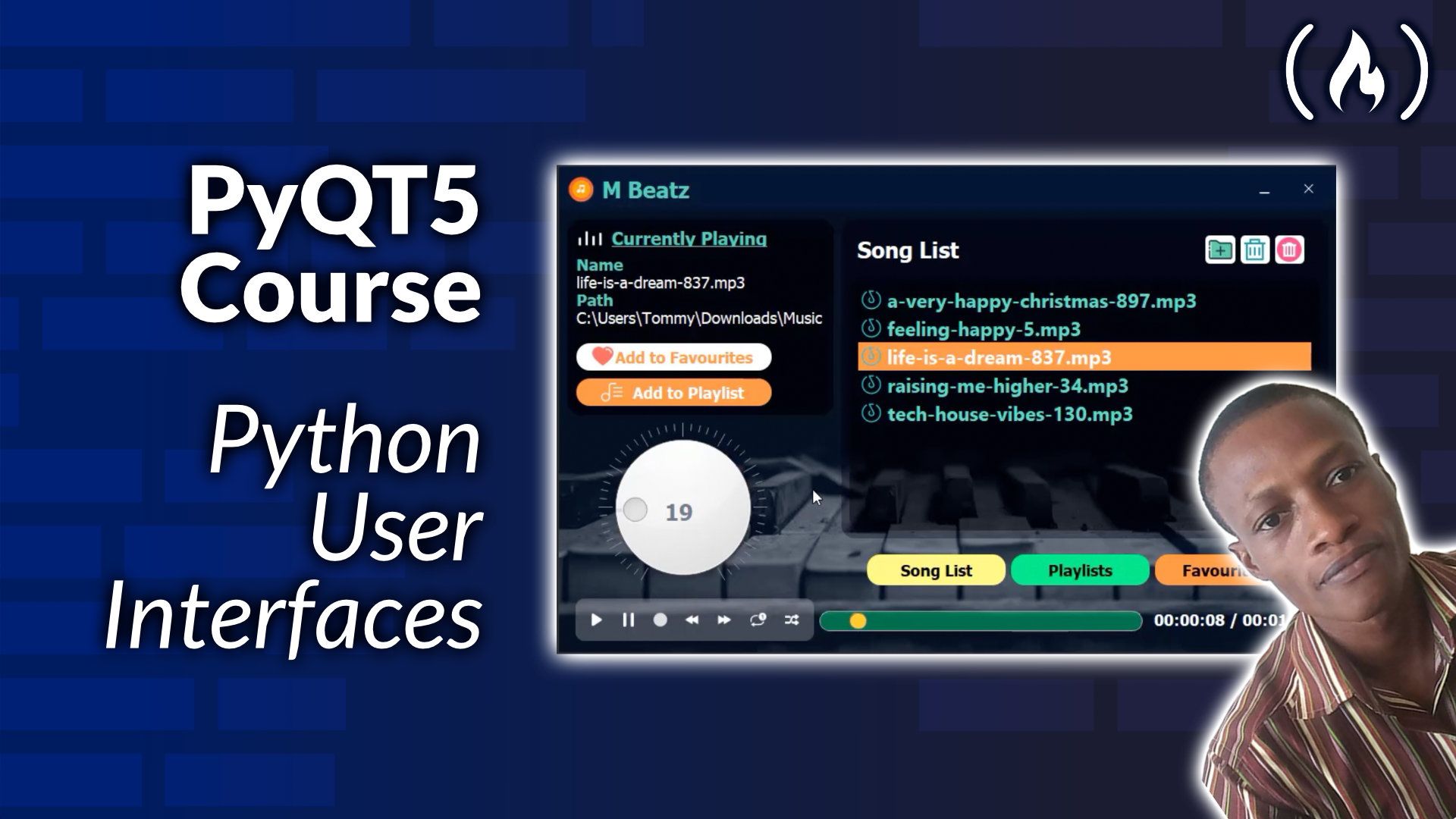Python can be used for everything from scripting to machine learning, web development, and graphical user interfaces.
We just posted a course on the freeCodeCamp.org YouTube channel that teaches them how to create visually appealing and functional user interfaces (UIs) using Python, with a specific focus on developing a Modern Music Player leveraging the PyQt5 framework. This course is an excellent resource for anyone looking to dive into the world of desktop application development with Python.
PyQt5 stands at the core of this course, known for its versatility in creating cross-platform applications. As a set of Python bindings for Qt, one of the most powerful and widely used C++ frameworks, PyQt5 brings the advantage of Qt's rich set of tools and functionalities to Python developers. This course harnesses this power to guide learners through the process of building a music player application that is not only functional but also aesthetically modern.
The course begins with an introduction to the project, setting the stage for what learners will accomplish. It then presents a demo of the finished music player, providing a glimpse of the sleek UI and the range of features the learners will implement. This initial showcase is designed to motivate and provide a clear goal for the course.
Later sections go into the practical aspects of the project. Learners start by obtaining the starter files and installing the necessary packages, ensuring a smooth setup process. The course then guides them through opening the Qt Designer, a fundamental tool in PyQt5 that allows for drag-and-drop UI design, making it accessible even to those new to UI development.
A significant portion of the course is dedicated to designing the user interface. Here, learners will explore the UI file and learn how to convert it, along with the resource file, into a format usable in Python. This part of the course emphasizes the importance of a visually appealing interface in modern applications.
As the course progresses, participants will learn to implement various functionalities that are important to a music player. These include adding songs, controlling playback (play, pause, stop), managing volume, navigating through the song with a slider, and features like playing the next or previous song, looping a single song, and playing songs randomly.
In addition to building the application, learners will gain insights into database functions, crucial for storing and retrieving user preferences and playlist information. This not only adds functionality to the music player but also introduces learners to fundamental database operations in Python.
Finally, the course wraps up with a conclusion that not only reviews what has been learned but also encourages learners to explore and expand upon the base project. This approach fosters a deeper understanding of PyQt5 and its potential in Python development.
Here is a list of all the sections in the course:
- Introduction
- Demo
- Getting Starter Files
- Installing required packages
- Opening the Qt Designer
- Exploring the UI file
- Designing the User Interface
- Convert the UI file and the resource file
- Creating custom title bar
- Add Songs
- Play Song
- Pause and Unpause
- Stop Song
- Volume Control
- Move Slider
- Next Song
- Previous Song
- Loop one song and play random
- Automatically play next song
- Remove Songs
- Navigate Pages
- Database Functions
- Favourite Songs Functions
- Automatically restart queues
- Playlist Functions
- Create Context Menus
- Show Playlist Content
- Background Slideshow
- Fixing Database Directory
- Conclusion
Overall, this video course is an excellent resource for anyone interested in Python, UI design, and application development. Watch the full course on the freeCodeCamp.org YouTube channel (7-hour watch).
